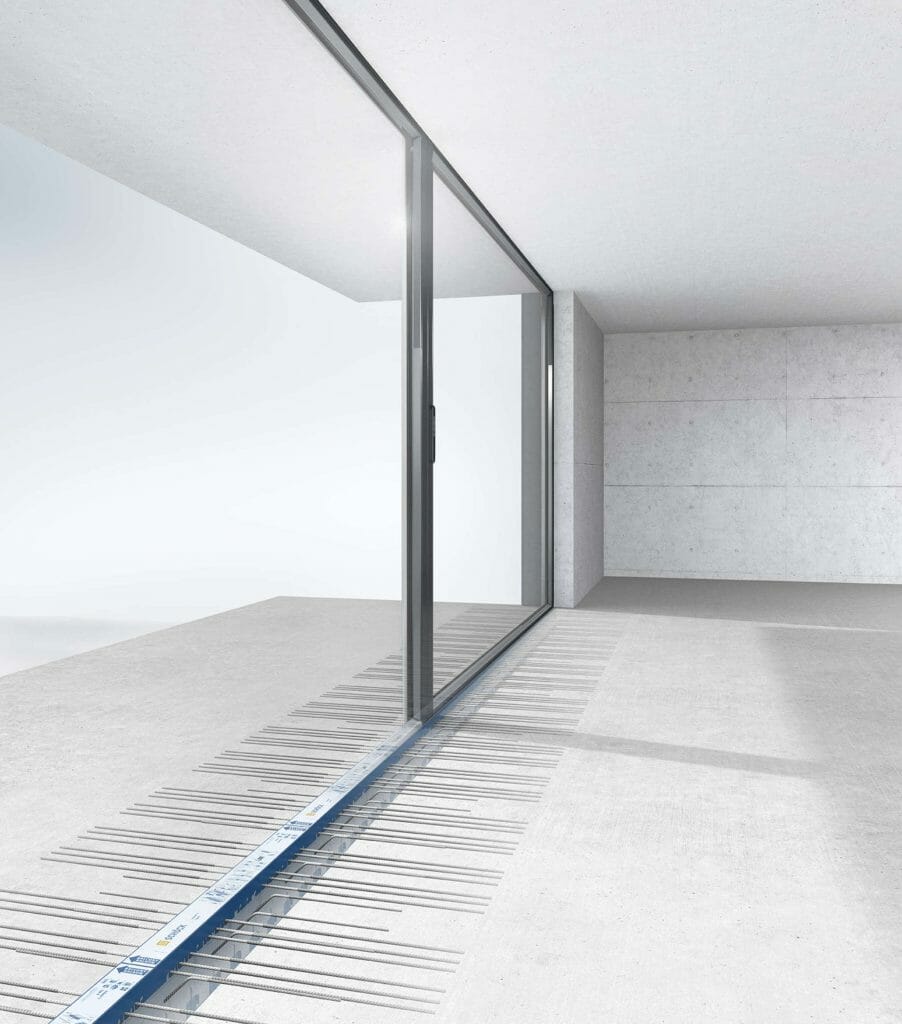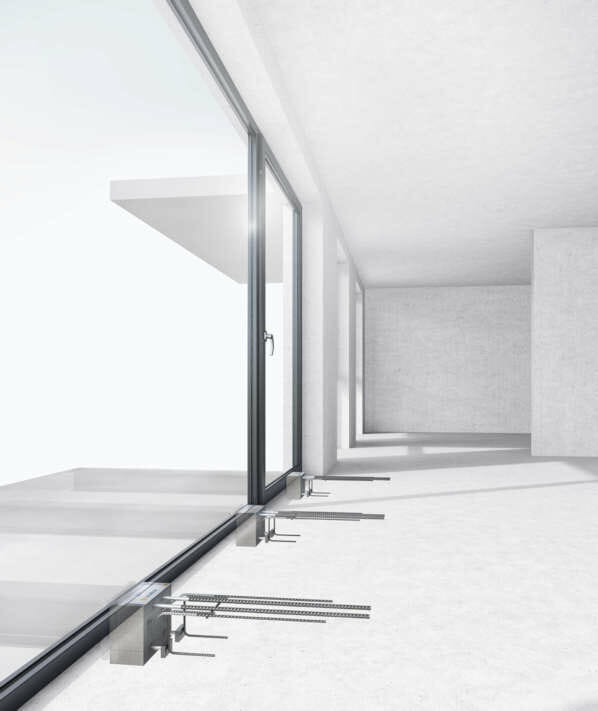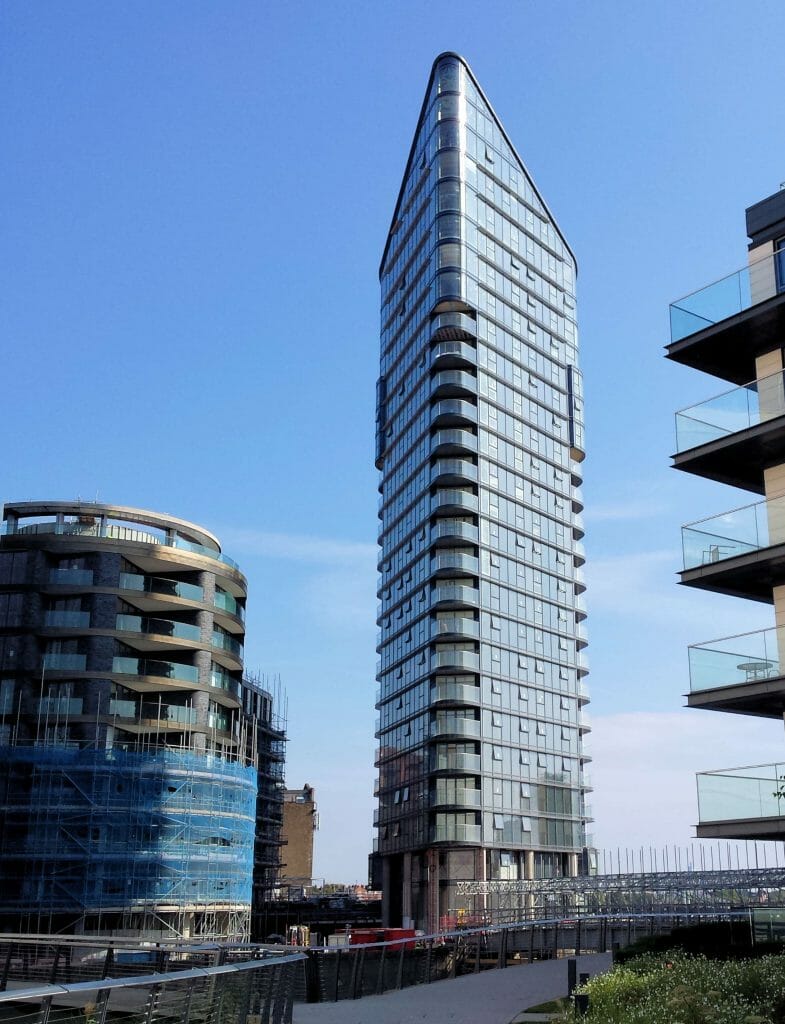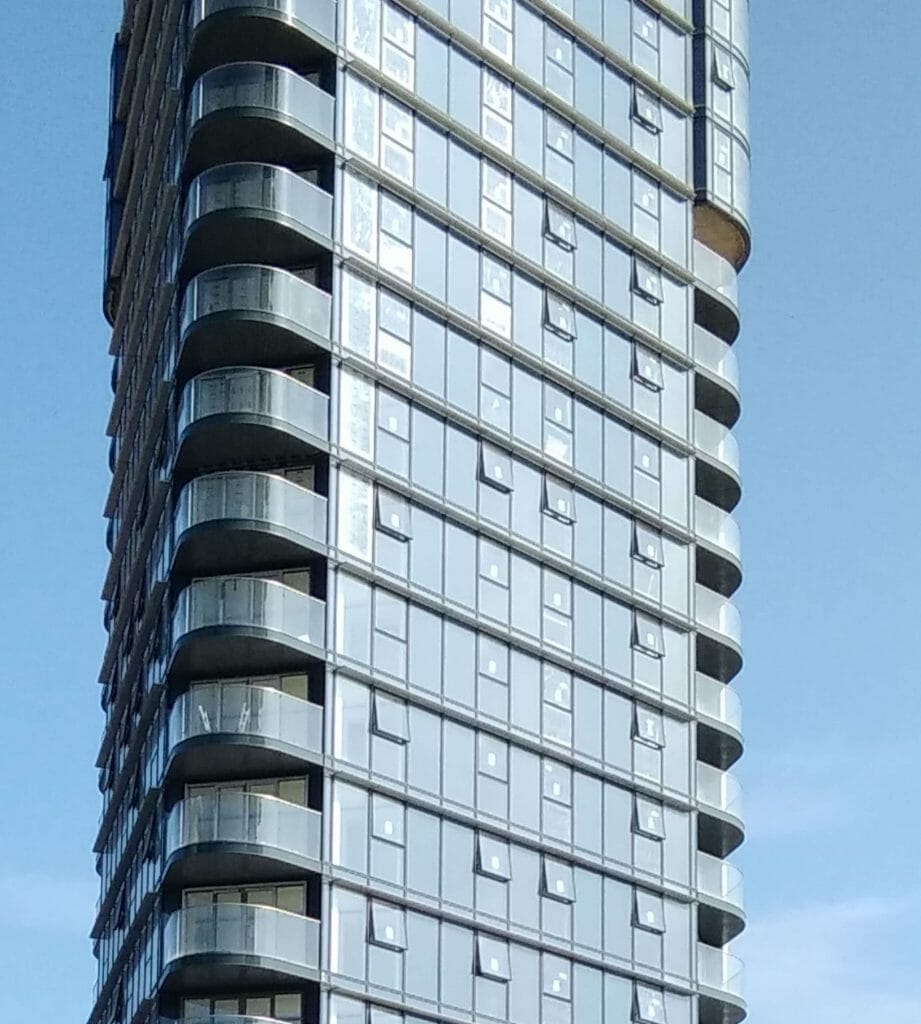
Once a neglected industrial site, Chelsea Waterfront in SW10, is being impressively transformed and minimising any risk of thermal bridging throughout has been key. In addition to meeting compliance with the Building Regulations, this is also important in meeting the criteria for the impending Future Homes Standard. The Isokorb load-bearing structural thermal break from Schöck offers the ideal solution in meeting all necessary compliances.
This is a two-phase development; the first being completed in 2019 and resulting in four riverside buildings and a 37-storey West Tower. The second phase is now well under way with the centrepiece being the old Lots Road Power Station, which first became operational in 1905 and eventually powered most of the London Underground for almost 80 years. The old Power Station is an iconic building and careful refurbishment will result in retention of the external walls, steel frame, chimneys and selected internal steelwork. When finished, the 13-storey building (now called the Metropolitan) will house 193 apartments and accommodate shops, restaurants and cafes along a 100 metre mall at ground floor level. Also, as part of this second phase, alongside the main Metropolitan Building there will be a 25 storey East Tower and two nine-storey refurbished residential buildings, one of which is a rotunda.
Minimising thermal bridging throughout
Throughout the entire development, improving the performance of the building envelope and minimising any risk of thermal bridging has been a key element in the design detailing. Quite apart from meeting compliance with the Building Regulations, this is increasingly important in meeting the criteria for the impending Future Homes Standard. Thermal bridges are localised areas of the building envelope, where the heat flow is usually increased in comparison with adjacent areas. As a result, the temperature of the interior surface near the thermal bridge is lower and if this area becomes too cold it can lead to condensation. Over time, mould is likely to form, potentially damaging the building structure and even posing a health risk to the inhabitants. The ideal solution is the Isokorb load-bearing structural thermal break from Schöck, which has featured throughout since the start of the development. Primarily the requirement has been for conventional balcony detailing and involved the Isokorb T type K for concrete-to-concrete and the T type SK for concrete-to-steel. The SK is a complete system thermal break and is unique in being the only formally UK approved product that satisfies the load-bearing and thermal insulation requirements for this type of application. There were though a number of special demands as well.
Meeting the challenges
The prominent corner plot on the site is an L-shaped building with a frontage on Lots Road and a wing extending towards the Creek. The interior features a continuous walkway and at the 90 degree intersection lateral forces had to be accommodated. To resolve the vertical and horizontal reactions a configuration was used that involved the Isokorb type HP (which transfers forces either parallel or perpendicular to the insulation layer) and type Q (for transferring shear forces on supported balconies and recessed balconies). In addition, there was also a slight castellation to the thermal break line, which had an impact on calculations involving the optimum cut lengths of the elements and their required load-carrying capacity.
With the Rotunda, the contractor had opted to precast the ‘pie-shaped’ balconies where possible. However, for structural reasons, or because some were too large for precasting (one unit was so large it had to be split into two parts) it was necessary to cast insitu. This presented the Schöck team with load capacity considerations, as well as delivery scheduling challenges involving different sites.
There was a major revision also involving the 13-storey Metropolitan Building. Isokorb units T type SQ, were to be incorporated at all levels to bolt the external steel walkways back to the concrete frame. However, there was a late design change to the project, which resulted in the steel walkways being converted to concrete on all but the first floor. This resulted in a complete review of the structural thermal break requirements and a tie force also had to be accommodated into the design to tie the balcony walkway structures back to the main structural frame.
All products are fully compliant
The comprehensive Isokorb range offers solutions for concrete-to-steel, concrete-to-concrete, steel-to-steel and – and even a maintenance free alternative to wrapped parapets. Products meet full compliance with the relevant UK building regulations, have NHBC approval and offer LABC Registration. There is also the security of independent BBA Certification. The requirement that the temperature factor used to indicate condensation risk (fRSI) must be greater than, or equal to, 0.75 for residential buildings, is also easily met by incorporating the Isokorb.
Contact Schöck on 01865 290 890; or visit the website at www.schoeck.com for full details of the Isokorb range





